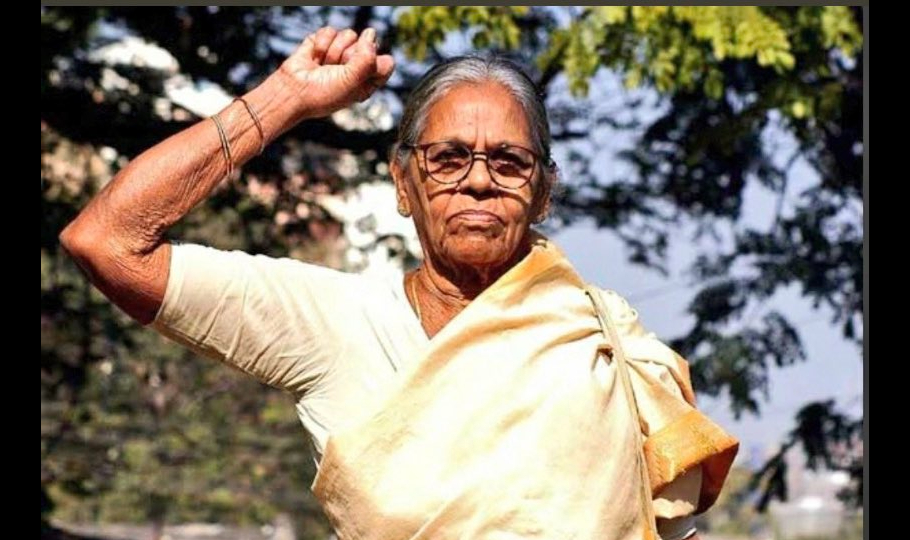
Mallu Swarajyam: Remembering a warrior of yester generation
A frail woman she was, but a valiant warrior too. She empathized with the poor and the landless and fought for the liberation of people. She took up guns at a tender age of 16 years and commanded the village army to fight the Nizam. She was Mallu Swarajyam.

Telangana lost a legendary icon of the Peasants Armed Struggle in the late 1940s when Mallu Swarajyam breathed her last on March 19, 2022, at the age of 91.
A frail woman she was, but a valiant warrior too. She empathized with the poor and the landless and fought for the liberation of people. At a young age of 11 years, she saw the troubles of bonded labour, understood the landlords’ atrocities and gave rice out of her kitchen to hungry workers. She took up guns at a tender age of 16 years and became a commander of the village army to fight the Nizam and his subordinate Doras (zamindars with revenue powers). She was Mallu Swarajyam.
She was twice an MLA from the CPI(M) and a fiery speaker all through. There was a continuous flow of visitors at the CPI(M) party headquarters in Hyderabad to pay tributes to her. When her mortal remains reached her village in Nalgonda district, it turned into a sea of humanity. The family donated her body to the local hospital for medical studies.
The Mother – the Mentor
“I was born in 1930 or 31. My mother gave me this name. One of her relatives was attending Congress meetings, and had taken part in Satyagraha in Bombay. He explained to my mother about Gandhi and the freedom movement. I was a toddler of 20 days. Inspired by his narrations, my mother christened me Swarajyam,” she once wrote in an autobiographical account of her life.
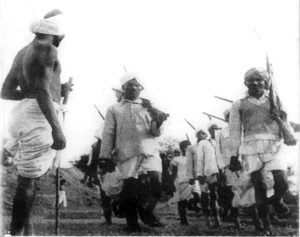
The gallantry of Jhansi Rani and the valour of Rani Rudrama of Orugal (now Warangal) influenced Swarajyam in her childhood. She learnt swimming and horse riding too.
Her mother gave her Maxim Gorky’s book: Mother (kudos to her mother, who drew new contours to this child’s syllabus). This book is the saga of a mother, who continued the revolutionary work left by her sons and his comrades when the Russian authorities put them in prisons. Nilovna, the mother in the illustrious novel, moved Swarajyam.
Once a woman worker named Ellamma was pounding rice. She fainted and fell down. Swarajyam gave her water. When Ellamma told her that she was hungry, Swarajyam provided her food. Then all the women who were pounding rice said that they too were hungry. Food was not immediately made available to all of them. The women asked for at least uncooked rice. They said that they would soak the raw rice in water and eat. This good Samaritan act became an act of blasphemy in her family. However, her mother protected Swarajyam from the fury of other family members, she remembers in her account.
Later, her mother organised a ‘Balala Sangham’ (Organisation for Children). When a girl, married as a child, was being forcibly taken away by her in-laws, Swarajyam and the Balala Sangham confronted the girls’ family and refused to let the girl be sent away. It was a great victory for child Swarajyam. It was a different matter that the two families—the boy’s and the girl’s—got together and sent the girl back to her in-laws’ house later.
On the path of struggle
Back in those days, girls would sing songs about their plight. Swarajyam wrote a folk song (called cradle song, since the refrain in the song is ‘Uyyalo’ means, ‘Oh Cradle!’) in her book. The song exhorted people against the atrocities of Visunuru, the landlord of Jangaon taluk. They sang that song often those days.
These firebrand songs lit the consciousness of the poor and awakened them to rebel against the system. Swarajyam did everything in the village to unite people against the feudal lords and stepped out of the village carrying a gun on her shoulder.
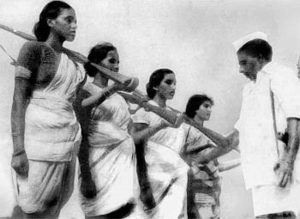
While being a guerilla, she doubled as a midwife and helped in child deliveries too. Ailamma, another woman fighter, stood her ground courageously. “Let me see what the landlord could do to me,” she would roar. This was the victory of Swarajyam. Many women came forward. Many villages joined the rebellion. Swarajyam’s messages electrified the atmosphere. Her words inspired thousands to plunge into the struggle.
Swarajyam — A guerrilla leader
Swarajyam was quite infamous as a rebel leader. Seventy-five years ago, the Nizam’s government announced a reward of ₹10,000 on her head. But Swarajyam lived among the masses without any fear of arrest. Everyone, from kids to nonagenarians, knew her.
Her sister Sasirekha, brother Bhim Reddy Narasimha Reddy, her classmate Ravi Narayan Reddy stood with her, giving unwavering support.
When the fire burns in the heart against injustice, the finger stands firmly on the trigger. Swarajyam triggered the awakening among the people against the feudal system.
She gave a clarion call: “Don’t supplicate saying ‘Dora kaalmokta, Nee banchan’ (I bow before you my Lord, I am your slave!). Instead demand, ‘Land to the tiller and palm trees for toddy tappers!’ Say, ‘This is a struggle for land, livelihood and liberation’.”
Such slogans aroused the people into action and the youth took up the gun. She learnt generosity when her family members distributed hundreds of acres of land to the poor in her childhood.
As an adolescent, she couldn’t bear watching the sufferings perpetrated by the Razakars who used to pounce on the hearths and homes, throw out the residents from homes mercilessly, reduce villages into ashes, occupy the fields and destroy the crops, ravish women, tortured the young and old alike.
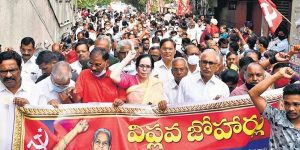
Swarajyam roused the people with fury and fire. She questioned, “If Razakars enter the villages, they kill us anyway. Why not kill some before dying?”
That inspired the young to prepare for death and to kill. Swarajyam formed an armed squad in each village, which grew into three thousand village dalams (groups).
She commanded these guerrilla forces. They converted everything in their hands into arms — a catapult, chilly-water or pepper water cannon, etc. In addition, they were armed with country made guns and handguns too.
Swarajyam felt no limitations being a woman. She inspired the peasantry who were furrowing the fields as a farmer in the daytime and a guerrilla in the night. She provoked the masses: “Would you continue to be slaves of Nizam or become masters of your own lives by fighting?”
After listening to such fiery speeches, who could refuse to take her challenge? Who would feel shy to arm themselves?
Feudal atrocities
The Zamindars were local revenue lords loyal to the Nizam. They bled the people white. If a child was born, they had to be given presents. If a couple gets married, they had to pay tax to the landlord. All labourers, the artisans, the potter, the carpenter, the iron smith, the weaver, had to give a portion of their earnings free to the landlords.
New mothers had to go to the fields just after three days of delivery. Lactating mothers were not allowed to breastfeed the toddlers. Such cruelty was perpetrated on the women. Swarjyam turned such women to rebellion.
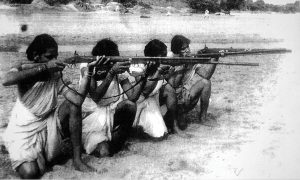
Feudalism was rampant in Nizam’s country. The landlords resided in fort-like structures called gadis. Even if the gadi’s gates were closed, people had to remove the footwear when they passed by them.
During a conversation, they could not start a sentence without first saying: “Nee Banchen Kaalmokta (I bow before your feet)”.
Poor people had to place their heads at the feet of the landlord. The commoners should never sport the headwear before the lord. Before seeing him, they should remove it.
“Instead of dying with fear every day, let us fight fearlessly,” Swarajyam exhorted the people. She gathered 20-30 people in every village.
Beyond the militant struggle, she opened libraries. If building was not available, she asked the youth to read books under a tree. She urged them to form self-governing groups and solve local problems.
Andhra Mahasabha was fighting untouchability in those days. Telengana was terribly shaken when Deshmukh Visunuru Ramachandra Reddy was brutally murdered young rebels. He was a notorious and cruel landlord of those days.
Gradually, the revolutionary movement extended to many districts of Telangana. The martyrdom of Doddi Komarayya of Kadavendi at the hands of Reddy’s goondas on July 4, 1946 was a turning point for the movement. ‘Death is inevitable. So, let us fight and die’, people came to a decision.
Ordinary people turn into extraordinary fighters
Swarajyam revealed in an interview that Major Jaipal Singh trained her to use guns. They learnt tactics to fight the Nizam’s armed police and the Razakar vigilantes. They also learnt to protect their arms from the enemies.
She narrated her experiences: “My nephew fired on the police, killed an SI, after he realized that he spent all the ammunition in the firing, he broke his gun and died in the firing. He did not want enemies to take over his gun and use it against his co-rebels. How fearless he was and didn’t care about his death and acted courageously?” she said.
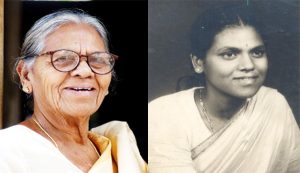
She lost four of her close relatives in the battles. Her eldest brother was a lawyer. His three sons joined the revolutionary movement. One commanded the armed squads. Another was killed in an encounter.
Far from true liberation
As a result of the heroic Telangana armed struggle, 3,000 villages were liberated. The Nizam’s rule collapsed. Hyderabad was integrated into the Indian Union. The villages got the rule of the Indian Constitution.
However, Swarajyam felt sad that the lives of the poor did not change in spite of this liberation. New landlords replaced old ones, she lamented. Landless and poor peasants are still fighting for land. Toddy tappers still have not got their ownership rights over palm trees. 75 years have passed since our independence. We are celebrating golden celebrations for the slogan—Land to the tiller—that has remained a mere rhetoric.
Mallu Swarajyam was elected to the Assembly in 1978 and in 1983. Once in the Assembly, she brought some parts of spent bullets and said that in her constituency, a landlord had occupied a poor man’s land. When she gathered people and questioned this highhandedness, the landlord fired upon the people. People pelted stones, and saved their lives.
Swarajyam gathered the empty shells of the cartridges that the landlord fired and presented them before the Assembly. “Is this our democracy?” she questioned.
Who will answer this question? Each voter either answers this question or raises it to secure our democracy.
(The writer is Dean, School of Law, Mahindra University, Hyderabad, and former Central Information Commissioner.)


